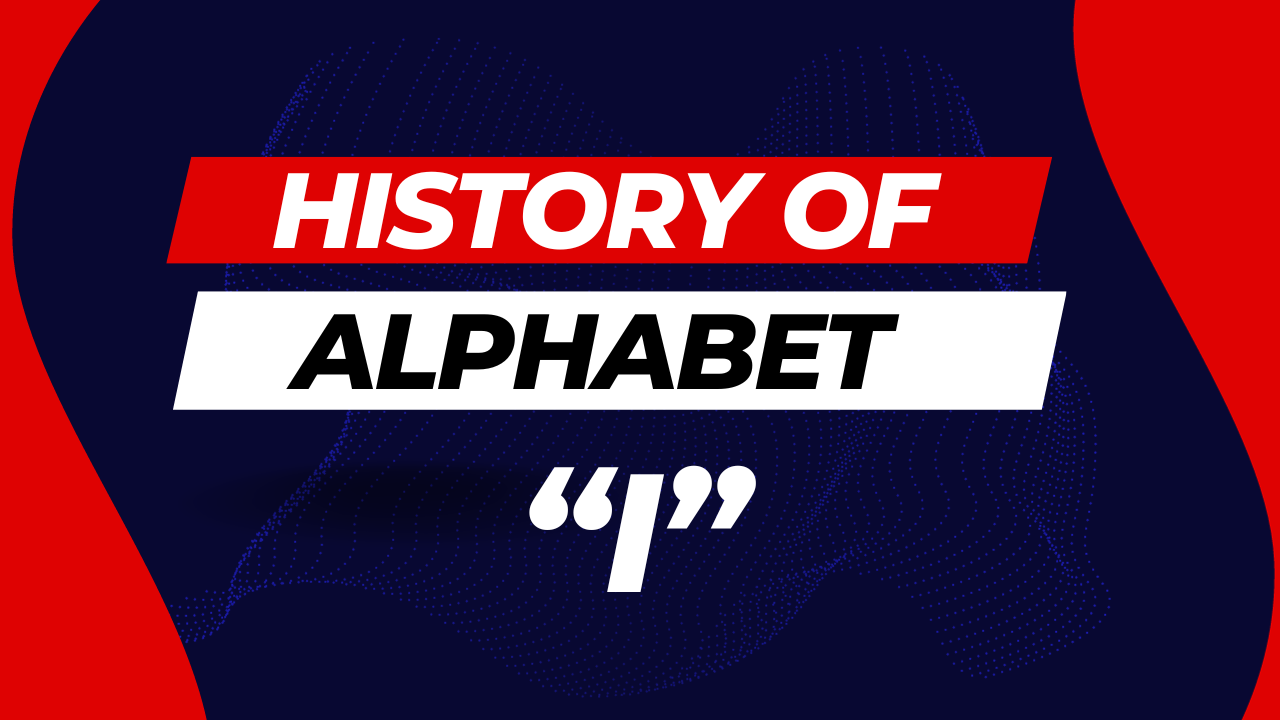Introduction:
The alphabet, a fundamental aspect of human communication, has a rich history that has evolved over centuries. In this article, we will delve into the origins and development of the letter "I," tracing its roots back to ancient civilizations and exploring its significance in various cultures.
Early Forms of "I":
In the ancient world, different civilizations crafted their versions of the letter "I." The Egyptians, renowned for their hieroglyphic writing, had a symbol resembling our modern "I." Similarly, the Phoenicians, known for their maritime trade, developed an early version of this letter.
The Phoenician Influence:
The Phoenicians, seafaring merchants of the Mediterranean, played a pivotal role in disseminating their writing system, including the letter "I," to other cultures. This influence spread to ancient Greece, where the letter underwent significant transformations.
The Greek Era:
In ancient Greece, the letter "I" took the form of "Ι," derived from the Phoenician symbol. The Greeks not only used it in their language but also employed it as a numeral, representing the number 10. With the rise of the Greek empire, the letter found its way into various aspects of Greek society, including literature and philosophy.
The Roman Adaptation
The Romans, upon encountering Greek culture, adopted the letter "I" into their Latin alphabet. Initially, it looked similar to the Greek version. However, as Latin evolved, the letter took on a shape closer to what we recognize today.
The Middle Ages and Renaissance:
During the Middle Ages, scribes meticulously copied texts by hand, preserving the letter "I" in religious manuscripts and scholarly works. With the advent of the printing press in the Renaissance era, the uniformity of the letter became crucial, leading to its standardization in fonts across Europe.
Modern Usage and Variations:
In contemporary times, the letter "I" holds a ubiquitous presence in languages worldwide. Its uppercase and lowercase forms are integral components of written communication, emphasizing individuality and identity.
Cultural Symbolism
Beyond language, the letter "I" has gained symbolic significance in various cultures. It often represents the self, individuality, and unity, embodying concepts of identity and introspection.
Conclusion:
The history of the letter "I" is a testament to human ingenuity and the evolution of written language. From ancient civilizations to the modern era, this simple yet profound symbol has transcended time, shaping the way we communicate and express ourselves.
Frequently Asked Questions (FAQs):
Q1: What is the earliest known use of the letter "I"? A: The letter "I" has ancient origins, appearing in Egyptian and Phoenician writing systems, dating back over 3000 years.
Q2: How did the Greeks contribute to the development of the letter "I"? A: The Greeks adopted the letter from the Phoenicians, incorporating it into their language and numerical system, where it represented the number 10.
Q3: Is the letter "I" used differently in various languages? A: Yes, the pronunciation and usage of the letter "I" can vary significantly across different languages and dialects.
Q4: What cultural significance does the letter "I" have? A: The letter "I" often symbolizes individuality, self-awareness, and unity in various cultures, representing concepts related to identity and introspection.
Q5: How did the invention of the printing press impact the letter "I"? A: The printing press standardized the appearance of the letter "I" in fonts, ensuring consistency and uniformity in printed materials across Europe.


.png)

.png)
0 Comments